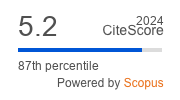Article | Open Access
A Survey Experiment on Citizens’ Preferences for ‘Vote–Centric’ vs. ‘Talk–Centric’ Democratic Innovations with Advisory vs. Binding Outcomes
| Views: | 5230 | | | Downloads: | 2476 |
Abstract: Previous research on public support for participatory decision-making fails to distinguish between vote-centric (referendums and initiatives) and talk-centric (deliberative-style meetings) instruments, despite a deliberative turn in democratic theory suggesting that political discussion among ordinary citizens improves decision-making. In an online factorial survey experiment conducted among a sample of 960 Americans recruited on Amazon’s Mechanical Turk, we compared support for the use of referendums and public meetings, arguing that attitudes towards these instruments depend on whether they are used to inform legislators or take binding decisions. Public meetings were rated considerably lower than referendums and initiatives, especially when the outcomes were binding. Contrary to expectations, we did not find a preference for binding (over advisory) referendums and individuals from referendum and initiative states, where these instruments are legally binding, expressed less support for binding participatory reforms than individuals from non-direct democratic states. Despite the many critiques of direct democracy, public debate in the US has not considered whether advisory outcomes might appease some of these concerns. The results also demonstrated that individuals expressing concerns about the inability of ordinary citizens to understand politics and about the welfare of minority groups were not as negative about participatory decision-making when legislators had the final say.
Keywords: direct democracy; deliberative democracy; democratic innovations; factorial survey experiments; participatory decision-making; public opinion; referendums; vignette experiment
Supplementary Files:
Published:
© Sebastien Rojon, Arieke J. Rijken, Bert Klandermans. This is an open access article distributed under the terms of the Creative Commons Attribution 4.0 license (http://creativecommons.org/licenses/by/4.0), which permits any use, distribution, and reproduction of the work without further permission provided the original author(s) and source are credited.


